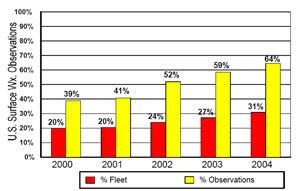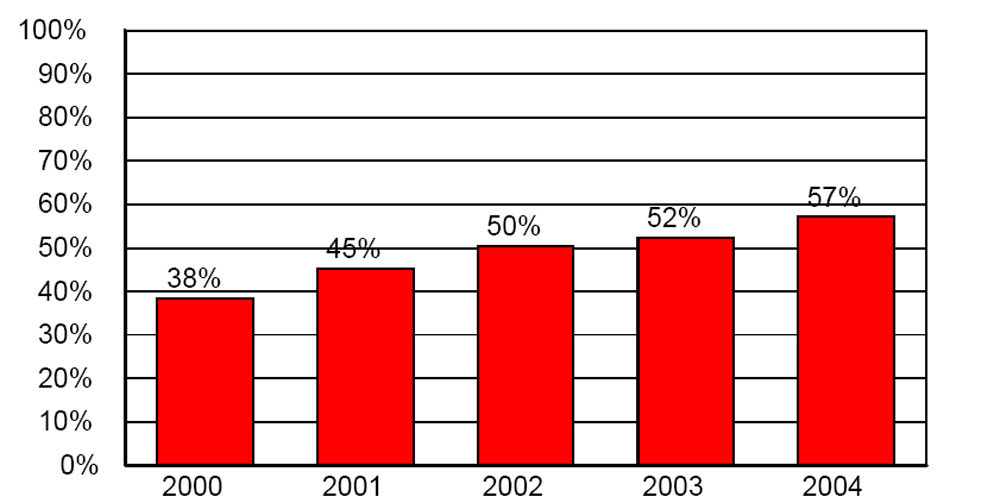
AMVER/SEAS 2000 Update, June 2005
Gary Soneira, AOML GOOS Center, Silver Spring, MDThe Shipboard Environmental [data] Acquisition System (SEAS) is a familiar tool for about 400 merchant and research vessel operators. The original system, designed in the early 80's to take surface and subsurface marine observations using a Tandy TRS-80, evolved through the Hewlett Packard-85 then IBM compatible personal computers running Microsoft DOS versions, now has evolved into a Windows environment. The new software has been named SEAS 2000.
Over the past two decades SEAS shipboard and shore-side software has proven itself to be a reliable mechanism for an end-to-end data system that allows for collection of marine meteorological and oceanographic data, the real-time transmission of that data, to the distribution on the Global Telecommunication System to national forecast and archiving centers around the world.
Development of SEAS 2000, which uses the Microsoft XP operating system, was intended to keep pace with improved computer systems found on modern merchant vessels. The software takes advantage of operating system enhancements such as multitasking, USB support, and superior graphics.
It's hard to imagine with a fleet of only about 400 ships, which is about 30% of the U.S. VOS fleet, SEAS participants provide 64% of the U.S. surface weather observations. The number of weather observations taken with SEAS in 2004 has increased 27% over the prior year. Figure 1 shows the growth of SEAS over the past 5 years.
|
|
From the oceanographic side, fewer than 40 ships gather 57% of the global expendable bathythermograph (XBT) ocean profile data with SEAS. Figure 2 shows the growth of SEAS XBT observations over the past 5 years.
Far more important than the quantity of data, SEAS 2000 has made a significant contribution toward improving the quality of marine observations. Basic quality and consistency checks are integrated into SEAS software. Since it's very difficult to quality control XBT observations at sea, all SEAS XBT data are automatically quality controlled on shore, before distribution.
Although SEAS 2000 already includes AMVER, marine mammal, iceberg, and drifting buoy deployment reports, additional enhancements are in various stages of development. These enhancements are directed toward greater data collection from a wider variety of environmental sensor suites. SEAS Program managers, scientists, and program managers around the world are looking to expand the role of commercial vessels as a critical component of the global ocean observing system. Those not already familiar with the SEAS Program, or wish to learn more about the application of XBT data, are encouraged to read the original article describing SEAS 2000 in the "Mariners Weather Log, Vol. 45, No. 2, August 2001, pages 50-58" and are invited to explore the NOAA Atlantic Oceanographic and Meteorological Laboratory (AOML) web site at http://www.aoml.noaa.gov/phod.
All vessel operators participating in the program, from the ship owners to the bridge officers, should take great pride in their contributions toward improving marine forecasts and climate studies. Ultimately, these observations improve safety of life at sea and a greater understanding of climate variability. The collecting of this information is a relentless task, and we tip our hats in gratitude to those mariners that continue to provide such reliable data for the good of the world's populace, most of which know nothing of the importance of this work.
Page last modified:

